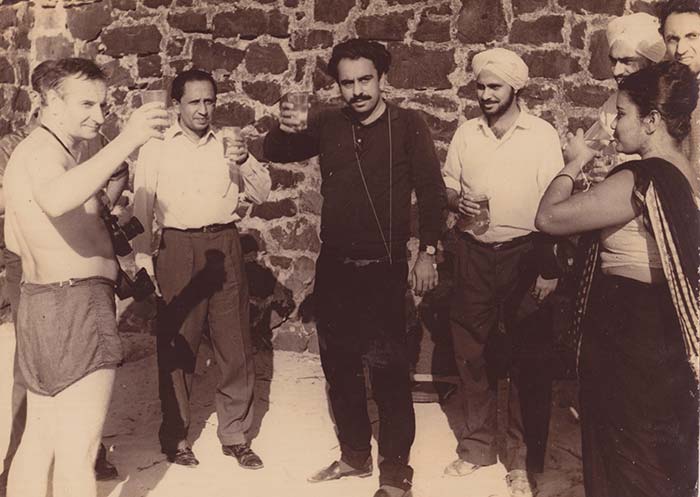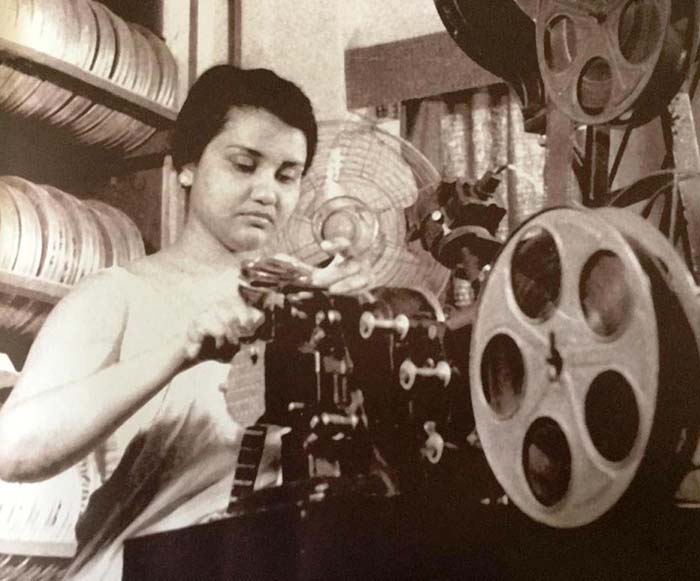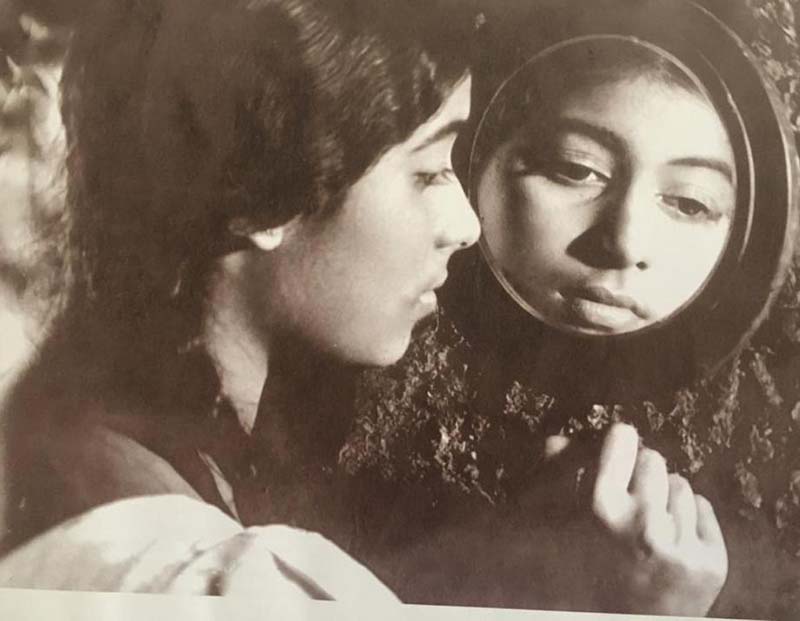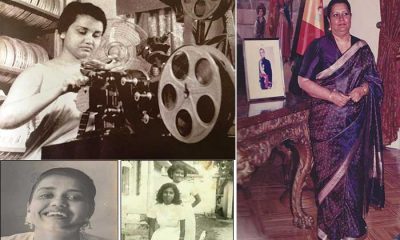Features
Remembering Sumithra
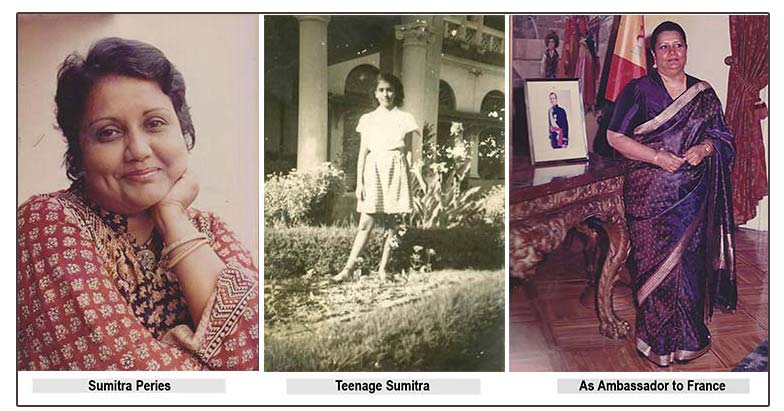
By Uditha Devapriya
One of the defining auteurs of Sri Lankan cinema, Sumitra Peries made an indelible and enduring contribution to women’s filmmaking in South Asia.Satyajit Ray once reportedly called Lester James Peries, the Sri Lankan film director who passed away at the age of 99 in April 2018, his “only relation east of Suez.” Lester’s wife Sumitra, who was his closest colleague, and who passed away on 19 January 2023 at the age of 87, had her first encounter with Ray in Mexico in 1963.
By that point, Sumitra had returned from her studies in England and earned a reputation as an assistant director and editor. She recalled that Ray had been “kind and courteous”, but a little disdainful of her profession. When she told him of what she did, the Indian director had been somewhat unimpressed, comparing her work to that of a cutter. Temperamentally candid, Sumitra had fired back, “Well, I’m glad I’m not just a cutter!”
Sumitra Peries did not remain a cutter for long. After working on her husband’s films, she made her directorial debut in 1978 with Gehenu Lamayi (Girls). The film established the themes that would preoccupy her for the rest of her career: the rift between rich and poor, the torments of adolescent love, and most significantly, the agony of being a woman in Sri Lanka and in South Asia. Sumitra’s work thus clearly stands out in the pantheon of regional cinema, in ways that critics have so far not done justice to.
Sri Lanka has long been orientalised for its sandy beaches and its cultural sites. In the first half of the 20th century, the colonial government helped establish a local cinema in the capital, Colombo. The first Sri Lankan film, Kadawunu Poronduwa (Broken Promise), came out in 1947, a year before the country obtained its independence.From its inception, however, local films were derided as derivative, because they were shot abroad and were felt to be too artificial, contrived, and unauthentic.
Seeking a better and more grounded cinema, a group of Westernised, urban middle-class artistes moved into this void. The most prominent of them was Lester James Peries, who had worked for some time at the official propaganda arm of the Sri Lankan government, the Government Film Unit (GFU), and who had imbibed the aesthetics of Italian neo-realism and the British documentary. Peries’s first film, Rekava (1956), came out around the same time that Satyajit Ray’s Pather Panchali did in India. Like Ray’s film, it was lukewarmly received by local critics, but went on to establish the country on the world map.
Sumitra Peries subsequently established herself in this circle, but she came from a very different background. Born Sumitra Gunawardena on 24 March 1935, she hailed from a family of affluent arrack distillers on her mother’s side and a family of radical, socialist, and anti-imperialist activists on her father’s. Her two paternal uncles, Philip and Robert, had been actively involved in the struggle against British colonialism: a far cry from the middle-class, Westernised, and Anglicised milieu of her husband.
Born in the southwestern village of Payagala, Sumitra was raised in Avissawella, located roughly 30 miles from Colombo. Initially she was educated at the local school, St Mary’s College, where she mingled with her social peers as well as more deprived sections of her village. Though not part of an urban elite, her mother, Harriet Wickramasinghe, moved around in important circles, “playing tennis with her sari on.” In contrast to her two uncles, her father, Henry, adjusted to his wife’s milieu, “practising as a proctor.”
Sumitra’s earliest influence was her mother. Through a distillery that her own mother, or Sumitra’s grandmother, had set up, “she took responsibility for the family.” Sumitra’s father, on the other hand, “sought and went after less practical pursuits.”
Their social status did not limit their daughter’s social interactions. “We lived in the most basic of settings,” she remembered. “No electricity, no proper running water, certainly no attached bathrooms. Only through a small radio did we get to know of what was happening in the outside world. As such I would get out and meet other people, including the sons and daughters of estate workers. I revelled in these encounters.”
Colombo lay a world away from all this. When Sumitra turned 13, a month after Sri Lanka gained independence from Great Britain, her family decided to send her there to study. Her new home was to be at Gower Street, in Colombo 4. It was conveniently located right next to her new school, Visakha Vidyalaya, the island’s leading Buddhist girls’ school. “I took time to adjust to my new setting, but eventually got used to life in Colombo.”
Among her siblings, Sumitra was closest to her elder brother, Gamini or “Kuru.” When their mother died two years after they shifted to Colombo, he entered a long period of depression. “My brother was a very temperamental man. He left everything to us and left the country. We did not know where he was, or whether he planned to return.”
A few years later, he got in touch with Sumitra: he was in Malta, and he wanted her to join him. Though she was engaged with her higher studies, she heeded his call. She packed her belongings and soon boarded a P&O Liner. “I was not quite 21.”
At Malta, Sumitra joined her brother and a bohemian coterie of friends. Together they sailed across the Mediterranean, dropping anchor in the French Riviera. At Saint-Tropez near the Riviera, Sumitra spotted Brigitte Bardot and Roger Vadim filming And God Created Woman (1956). It was the first time she had seen a film being made.
By then she was at a loss: “I badly wanted to be a psychiatrist. My brother felt it would be best if I went to Switzerland, to study at the Jung Institute.”
Just as Sumitra was about to embark on her higher education, however, Gamini decided to return to Sri Lanka. “This led to a series of misadventures that ended in Paris. There I had a vague desire to settle in the Left Bank.” Fate, however, had other plans for her.
Sri Lanka had just established a Legation in Paris. The country’s Envoy, Vernon Mendis, got in touch with Sumitra and boarded her at his official residence. It was here, at the Legation, that she met Lester James Peries. “He told me to go to England and study film. He felt I was wasting my talents in Paris. Since I had nothing to lose, I heeded his advice.”
Sumitra enrolled herself at the London School of Film Technique (LSFT) in Brixton, the sole female in a class of white and middle-class males.
During her years at the LSFT, she grew very close to the filmmaker Lindsay Anderson, who taught her class. Lindsay had already met Lester a few years before. Needless to say, he and Sumitra became very good friends. Their association grew so strong that in her later visits to England, “we would meet, and he would cook for me.”
Sumitra successfully completed her studies. But finding a job was challenging. “Those days, if you weren’t a member of a union, it was not easy to enter the industry.”
Armed with her qualification, she knocked on the doors of Elizabeth Mai-Harris, one of Britain’s leading subtitling firms. “I passionately argued my case. Fortunately, they believed in me and took me in. My fluency in French may have helped.”
Sometime later, though, she encountered another problem: “I started growing homesick.” Her elder brother ordered her to return. She thus came back home.Sumitra then found work as an assistant to Lester Peries, onboard his film Sandesaya (The Message, 1960). “I was the sole female crew member. We were shooting a world away from Colombo. A tough ordeal for any woman, but I grew to enjoy it.”
She also grew close to Lester. Four years later, in 1964, she married him.
Making full use of her editing skills, Sumitra wound up as her husband’s closest aide. She worked on all his films in the 1960s: Gamperaliya (1963), Delovak Athara (1966), Ran Salu (1967), Golu Hadawatha (1968), and Akkara Paha (1969).
These films won awards and accolades abroad: Gamperaliya secured the Golden Peacock or the Best Film Award at the 3rd Indian International Film Festival and the Golden Head of Palenque at the Mexico Film Festival, while Ran Salu won the Gandhi Award at New Delhi and was telecast on Raidió Teilifís Éireann, Ireland.
Recalling her years as an editor, she once told me, “What fascinated me during these years was the mise-en-scène. To achieve the right cut is harder than you think. You need to train your eyes and you need to make the decision then and there.” Contrary to what Satyajit Ray may have felt, then, her job was hardly that of a mere cutter.
After a stint in France and a few idle years, Sumitra carved her path as director with Gehenu Lamai in 1978. Based on a popular novel, it became an instant success wherever it went: the British press in particular loved it, with David Robinson of The Times lauding it for its “holistic feminine sensibility.”
Its success emboldened her to make nine more films: Ganga Addara (By the Bank of the River, 1980), Yahalu Yeheli (Friends, 1982), Maya (1984), Sagara Jalaya Madi Handuwa Oba Sanda (A Letter Written in the Sand, 1988), Loku Duwa (The Eldest Daughter, 1994), Duwata Mawaka Misa (Mother Alone, 1997), Sakman Maluwa (The Pleasure Garden, 2003), Yahaluwo (Friends, 2007) and Vaishnavee (The Goddess, 2018).
Apart from her work in film, Sumitra also worked in television, having gained six months’ work experience at the French Radio and Television Institute (ORTF) in Paris in 1971. She served as Sri Lanka’s Ambassador Extraordinary and Plenipotentiary to France and Spain from 1995 to 1998, and did her part to secure international goodwill for the country at a time of rising ethnic tensions and separatist conflict.
With Yahaluwo and Vaishnavee behind her, she was toying with several ideas, as late as 2022, for her next venture. Humble to a fault, she remained open to outsiders, in particular young, aspiring directors who would constantly seek her advice.
Sumitra’s passing, given all this, signifies an end and a passing of an era. Linked through her husband to some of the most exciting strides in the arts of post-independence Sri Lanka, she nevertheless carved her own path. Indeed, as Vilasnee Tampoe-Hautin rightly argues in her biography, Sumitra Peries: Sri Lankan Filmmaker, while she is considered a mere appendage to her husband’s work, her career was distinct on its own right.
Moreover, unlike South Asian women filmmakers from her time – including Fatma Begum, Parveen Rizvi, Shamin Ara, Kohinoor Akhter, and Aparna Sen – she did not come to the director’s chair as an actress. In that sense Sumitra, with her education in the West, was a definitive precursor to the likes of Mira Nair and Deepa Mehta. This point has not yet been appreciated or acknowledged by historians of the regional cinema.
A product of a rural upper middle-class, Sumitra Peries remained intimately attached to her people, in particular women. Her films, which dwell considerably on their agonies and their torments, are in that sense an enduring testament, not just to her craft, but also to a bygone era in filmmaking – both in Sri Lanka and in South Asia.
Uditha Devapriya is a writer, researcher, and analyst based in Sri Lanka who contributes to a number of publications on topics such as history, art and culture, politics, and foreign policy. He can be reached at udakdev1@gmail.com.
Features
The heart-friendly health minister

by Dr Gotabhya Ranasinghe
Senior Consultant Cardiologist
National Hospital Sri Lanka
When we sought a meeting with Hon Dr. Ramesh Pathirana, Minister of Health, he graciously cleared his busy schedule to accommodate us. Renowned for his attentive listening and deep understanding, Minister Pathirana is dedicated to advancing the health sector. His openness and transparency exemplify the qualities of an exemplary politician and minister.
Dr. Palitha Mahipala, the current Health Secretary, demonstrates both commendable enthusiasm and unwavering support. This combination of attributes makes him a highly compatible colleague for the esteemed Minister of Health.
Our discussion centered on a project that has been in the works for the past 30 years, one that no other minister had managed to advance.
Minister Pathirana, however, recognized the project’s significance and its potential to revolutionize care for heart patients.
The project involves the construction of a state-of-the-art facility at the premises of the National Hospital Colombo. The project’s location within the premises of the National Hospital underscores its importance and relevance to the healthcare infrastructure of the nation.
This facility will include a cardiology building and a tertiary care center, equipped with the latest technology to handle and treat all types of heart-related conditions and surgeries.
Securing funding was a major milestone for this initiative. Minister Pathirana successfully obtained approval for a $40 billion loan from the Asian Development Bank. With the funding in place, the foundation stone is scheduled to be laid in September this year, and construction will begin in January 2025.
This project guarantees a consistent and uninterrupted supply of stents and related medications for heart patients. As a result, patients will have timely access to essential medical supplies during their treatment and recovery. By securing these critical resources, the project aims to enhance patient outcomes, minimize treatment delays, and maintain the highest standards of cardiac care.
Upon its fruition, this monumental building will serve as a beacon of hope and healing, symbolizing the unwavering dedication to improving patient outcomes and fostering a healthier society.We anticipate a future marked by significant progress and positive outcomes in Sri Lanka’s cardiovascular treatment landscape within the foreseeable timeframe.
Features
A LOVING TRIBUTE TO JESUIT FR. ALOYSIUS PIERIS ON HIS 90th BIRTHDAY

by Fr. Emmanuel Fernando, OMI
Jesuit Fr. Aloysius Pieris (affectionately called Fr. Aloy) celebrated his 90th birthday on April 9, 2024 and I, as the editor of our Oblate Journal, THE MISSIONARY OBLATE had gone to press by that time. Immediately I decided to publish an article, appreciating the untiring selfless services he continues to offer for inter-Faith dialogue, the renewal of the Catholic Church, his concern for the poor and the suffering Sri Lankan masses and to me, the present writer.
It was in 1988, when I was appointed Director of the Oblate Scholastics at Ampitiya by the then Oblate Provincial Fr. Anselm Silva, that I came to know Fr. Aloy more closely. Knowing well his expertise in matters spiritual, theological, Indological and pastoral, and with the collaborative spirit of my companion-formators, our Oblate Scholastics were sent to Tulana, the Research and Encounter Centre, Kelaniya, of which he is the Founder-Director, for ‘exposure-programmes’ on matters spiritual, biblical, theological and pastoral. Some of these dimensions according to my view and that of my companion-formators, were not available at the National Seminary, Ampitiya.
Ever since that time, our Oblate formators/ accompaniers at the Oblate Scholasticate, Ampitiya , have continued to send our Oblate Scholastics to Tulana Centre for deepening their insights and convictions regarding matters needed to serve the people in today’s context. Fr. Aloy also had tried very enthusiastically with the Oblate team headed by Frs. Oswald Firth and Clement Waidyasekara to begin a Theologate, directed by the Religious Congregations in Sri Lanka, for the contextual formation/ accompaniment of their members. It should very well be a desired goal of the Leaders / Provincials of the Religious Congregations.
Besides being a formator/accompanier at the Oblate Scholasticate, I was entrusted also with the task of editing and publishing our Oblate journal, ‘The Missionary Oblate’. To maintain the quality of the journal I continue to depend on Fr. Aloy for his thought-provoking and stimulating articles on Biblical Spirituality, Biblical Theology and Ecclesiology. I am very grateful to him for his generous assistance. Of late, his writings on renewal of the Church, initiated by Pope St. John XX111 and continued by Pope Francis through the Synodal path, published in our Oblate journal, enable our readers to focus their attention also on the needed renewal in the Catholic Church in Sri Lanka. Fr. Aloy appreciated very much the Synodal path adopted by the Jesuit Pope Francis for the renewal of the Church, rooted very much on prayerful discernment. In my Religious and presbyteral life, Fr.Aloy continues to be my spiritual animator / guide and ongoing formator / acccompanier.
Fr. Aloysius Pieris, BA Hons (Lond), LPh (SHC, India), STL (PFT, Naples), PhD (SLU/VC), ThD (Tilburg), D.Ltt (KU), has been one of the eminent Asian theologians well recognized internationally and one who has lectured and held visiting chairs in many universities both in the West and in the East. Many members of Religious Congregations from Asian countries have benefited from his lectures and guidance in the East Asian Pastoral Institute (EAPI) in Manila, Philippines. He had been a Theologian consulted by the Federation of Asian Bishops’ Conferences for many years. During his professorship at the Gregorian University in Rome, he was called to be a member of a special group of advisers on other religions consulted by Pope Paul VI.
Fr. Aloy is the author of more than 30 books and well over 500 Research Papers. Some of his books and articles have been translated and published in several countries. Among those books, one can find the following: 1) The Genesis of an Asian Theology of Liberation (An Autobiographical Excursus on the Art of Theologising in Asia, 2) An Asian Theology of Liberation, 3) Providential Timeliness of Vatican 11 (a long-overdue halt to a scandalous millennium, 4) Give Vatican 11 a chance, 5) Leadership in the Church, 6) Relishing our faith in working for justice (Themes for study and discussion), 7) A Message meant mainly, not exclusively for Jesuits (Background information necessary for helping Francis renew the Church), 8) Lent in Lanka (Reflections and Resolutions, 9) Love meets wisdom (A Christian Experience of Buddhism, 10) Fire and Water 11) God’s Reign for God’s poor, 12) Our Unhiddden Agenda (How we Jesuits work, pray and form our men). He is also the Editor of two journals, Vagdevi, Journal of Religious Reflection and Dialogue, New Series.
Fr. Aloy has a BA in Pali and Sanskrit from the University of London and a Ph.D in Buddhist Philosophy from the University of Sri Lankan, Vidyodaya Campus. On Nov. 23, 2019, he was awarded the prestigious honorary Doctorate of Literature (D.Litt) by the Chancellor of the University of Kelaniya, the Most Venerable Welamitiyawe Dharmakirthi Sri Kusala Dhamma Thera.
Fr. Aloy continues to be a promoter of Gospel values and virtues. Justice as a constitutive dimension of love and social concern for the downtrodden masses are very much noted in his life and work. He had very much appreciated the commitment of the late Fr. Joseph (Joe) Fernando, the National Director of the Social and Economic Centre (SEDEC) for the poor.
In Sri Lanka, a few religious Congregations – the Good Shepherd Sisters, the Christian Brothers, the Marist Brothers and the Oblates – have invited him to animate their members especially during their Provincial Congresses, Chapters and International Conferences. The mainline Christian Churches also have sought his advice and followed his seminars. I, for one, regret very much, that the Sri Lankan authorities of the Catholic Church –today’s Hierarchy—- have not sought Fr.
Aloy’s expertise for the renewal of the Catholic Church in Sri Lanka and thus have not benefited from the immense store of wisdom and insight that he can offer to our local Church while the Sri Lankan bishops who governed the Catholic church in the immediate aftermath of the Second Vatican Council (Edmund Fernando OMI, Anthony de Saram, Leo Nanayakkara OSB, Frank Marcus Fernando, Paul Perera,) visited him and consulted him on many matters. Among the Tamil Bishops, Bishop Rayappu Joseph was keeping close contact with him and Bishop J. Deogupillai hosted him and his team visiting him after the horrible Black July massacre of Tamils.
Features
A fairy tale, success or debacle

Sri Lanka-Singapore Free Trade Agreement
By Gomi Senadhira
senadhiragomi@gmail.com
“You might tell fairy tales, but the progress of a country cannot be achieved through such narratives. A country cannot be developed by making false promises. The country moved backward because of the electoral promises made by political parties throughout time. We have witnessed that the ultimate result of this is the country becoming bankrupt. Unfortunately, many segments of the population have not come to realize this yet.” – President Ranil Wickremesinghe, 2024 Budget speech
Any Sri Lankan would agree with the above words of President Wickremesinghe on the false promises our politicians and officials make and the fairy tales they narrate which bankrupted this country. So, to understand this, let’s look at one such fairy tale with lots of false promises; Ranil Wickremesinghe’s greatest achievement in the area of international trade and investment promotion during the Yahapalana period, Sri Lanka-Singapore Free Trade Agreement (SLSFTA).
It is appropriate and timely to do it now as Finance Minister Wickremesinghe has just presented to parliament a bill on the National Policy on Economic Transformation which includes the establishment of an Office for International Trade and the Sri Lanka Institute of Economics and International Trade.
Was SLSFTA a “Cleverly negotiated Free Trade Agreement” as stated by the (former) Minister of Development Strategies and International Trade Malik Samarawickrama during the Parliamentary Debate on the SLSFTA in July 2018, or a colossal blunder covered up with lies, false promises, and fairy tales? After SLSFTA was signed there were a number of fairy tales published on this agreement by the Ministry of Development Strategies and International, Institute of Policy Studies, and others.
However, for this article, I would like to limit my comments to the speech by Minister Samarawickrama during the Parliamentary Debate, and the two most important areas in the agreement which were covered up with lies, fairy tales, and false promises, namely: revenue loss for Sri Lanka and Investment from Singapore. On the other important area, “Waste products dumping” I do not want to comment here as I have written extensively on the issue.
1. The revenue loss
During the Parliamentary Debate in July 2018, Minister Samarawickrama stated “…. let me reiterate that this FTA with Singapore has been very cleverly negotiated by us…. The liberalisation programme under this FTA has been carefully designed to have the least impact on domestic industry and revenue collection. We have included all revenue sensitive items in the negative list of items which will not be subject to removal of tariff. Therefore, 97.8% revenue from Customs duty is protected. Our tariff liberalisation will take place over a period of 12-15 years! In fact, the revenue earned through tariffs on goods imported from Singapore last year was Rs. 35 billion.
The revenue loss for over the next 15 years due to the FTA is only Rs. 733 million– which when annualised, on average, is just Rs. 51 million. That is just 0.14% per year! So anyone who claims the Singapore FTA causes revenue loss to the Government cannot do basic arithmetic! Mr. Speaker, in conclusion, I call on my fellow members of this House – don’t mislead the public with baseless criticism that is not grounded in facts. Don’t look at petty politics and use these issues for your own political survival.”
I was surprised to read the minister’s speech because an article published in January 2018 in “The Straits Times“, based on information released by the Singaporean Negotiators stated, “…. With the FTA, tariff savings for Singapore exports are estimated to hit $10 million annually“.
As the annual tariff savings (that is the revenue loss for Sri Lanka) calculated by the Singaporean Negotiators, Singaporean $ 10 million (Sri Lankan rupees 1,200 million in 2018) was way above the rupees’ 733 million revenue loss for 15 years estimated by the Sri Lankan negotiators, it was clear to any observer that one of the parties to the agreement had not done the basic arithmetic!
Six years later, according to a report published by “The Morning” newspaper, speaking at the Committee on Public Finance (COPF) on 7th May 2024, Mr Samarawickrama’s chief trade negotiator K.J. Weerasinghehad had admitted “…. that forecasted revenue loss for the Government of Sri Lanka through the Singapore FTA is Rs. 450 million in 2023 and Rs. 1.3 billion in 2024.”
If these numbers are correct, as tariff liberalisation under the SLSFTA has just started, we will pass Rs 2 billion very soon. Then, the question is how Sri Lanka’s trade negotiators made such a colossal blunder. Didn’t they do their basic arithmetic? If they didn’t know how to do basic arithmetic they should have at least done their basic readings. For example, the headline of the article published in The Straits Times in January 2018 was “Singapore, Sri Lanka sign FTA, annual savings of $10m expected”.
Anyway, as Sri Lanka’s chief negotiator reiterated at the COPF meeting that “…. since 99% of the tariffs in Singapore have zero rates of duty, Sri Lanka has agreed on 80% tariff liberalisation over a period of 15 years while expecting Singapore investments to address the imbalance in trade,” let’s turn towards investment.
Investment from Singapore
In July 2018, speaking during the Parliamentary Debate on the FTA this is what Minister Malik Samarawickrama stated on investment from Singapore, “Already, thanks to this FTA, in just the past two-and-a-half months since the agreement came into effect we have received a proposal from Singapore for investment amounting to $ 14.8 billion in an oil refinery for export of petroleum products. In addition, we have proposals for a steel manufacturing plant for exports ($ 1 billion investment), flour milling plant ($ 50 million), sugar refinery ($ 200 million). This adds up to more than $ 16.05 billion in the pipeline on these projects alone.
And all of these projects will create thousands of more jobs for our people. In principle approval has already been granted by the BOI and the investors are awaiting the release of land the environmental approvals to commence the project.
I request the Opposition and those with vested interests to change their narrow-minded thinking and join us to develop our country. We must always look at what is best for the whole community, not just the few who may oppose. We owe it to our people to courageously take decisions that will change their lives for the better.”
According to the media report I quoted earlier, speaking at the Committee on Public Finance (COPF) Chief Negotiator Weerasinghe has admitted that Sri Lanka was not happy with overall Singapore investments that have come in the past few years in return for the trade liberalisation under the Singapore-Sri Lanka Free Trade Agreement. He has added that between 2021 and 2023 the total investment from Singapore had been around $162 million!
What happened to those projects worth $16 billion negotiated, thanks to the SLSFTA, in just the two-and-a-half months after the agreement came into effect and approved by the BOI? I do not know about the steel manufacturing plant for exports ($ 1 billion investment), flour milling plant ($ 50 million) and sugar refinery ($ 200 million).
However, story of the multibillion-dollar investment in the Petroleum Refinery unfolded in a manner that would qualify it as the best fairy tale with false promises presented by our politicians and the officials, prior to 2019 elections.
Though many Sri Lankans got to know, through the media which repeatedly highlighted a plethora of issues surrounding the project and the questionable credentials of the Singaporean investor, the construction work on the Mirrijiwela Oil Refinery along with the cement factory began on the24th of March 2019 with a bang and Minister Ranil Wickremesinghe and his ministers along with the foreign and local dignitaries laid the foundation stones.
That was few months before the 2019 Presidential elections. Inaugurating the construction work Prime Minister Ranil Wickremesinghe said the projects will create thousands of job opportunities in the area and surrounding districts.
The oil refinery, which was to be built over 200 acres of land, with the capacity to refine 200,000 barrels of crude oil per day, was to generate US$7 billion of exports and create 1,500 direct and 3,000 indirect jobs. The construction of the refinery was to be completed in 44 months. Four years later, in August 2023 the Cabinet of Ministers approved the proposal presented by President Ranil Wickremesinghe to cancel the agreement with the investors of the refinery as the project has not been implemented! Can they explain to the country how much money was wasted to produce that fairy tale?
It is obvious that the President, ministers, and officials had made huge blunders and had deliberately misled the public and the parliament on the revenue loss and potential investment from SLSFTA with fairy tales and false promises.
As the president himself said, a country cannot be developed by making false promises or with fairy tales and these false promises and fairy tales had bankrupted the country. “Unfortunately, many segments of the population have not come to realize this yet”.
(The writer, a specialist and an activist on trade and development issues . )


